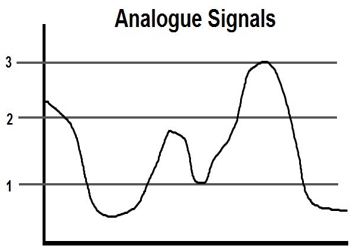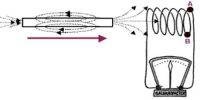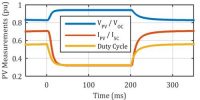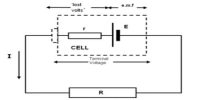The magnitude of some quantity which changes continuously is called analogue. The magnitude of the quantities such as sound, light, temperature, pressure can be of any value within a definite extent. Analogue data is sent continuously. Telephone, radio, television broadcast and cable television generally send analogue data.
An analogue signal will resemble the original speech or music by having the frequency or amplitude of the wave go up and down in the same way as the sound in speech or music goes up and down. The word “analogue” means “similar” or “corresponding”.

So the analogue signals are continuously changeable voltage or current. This voltage or current is normally changed and can receive any value between the lowest and the highest value. Analogue signal is really a sine wave. Audio and video voltages are the example of analogue signals.
Information in the form of an analogue signal can be added to another electromagnetic wave which is used for transmission. This wave carries the analogue signal and is called the carrier wave.















